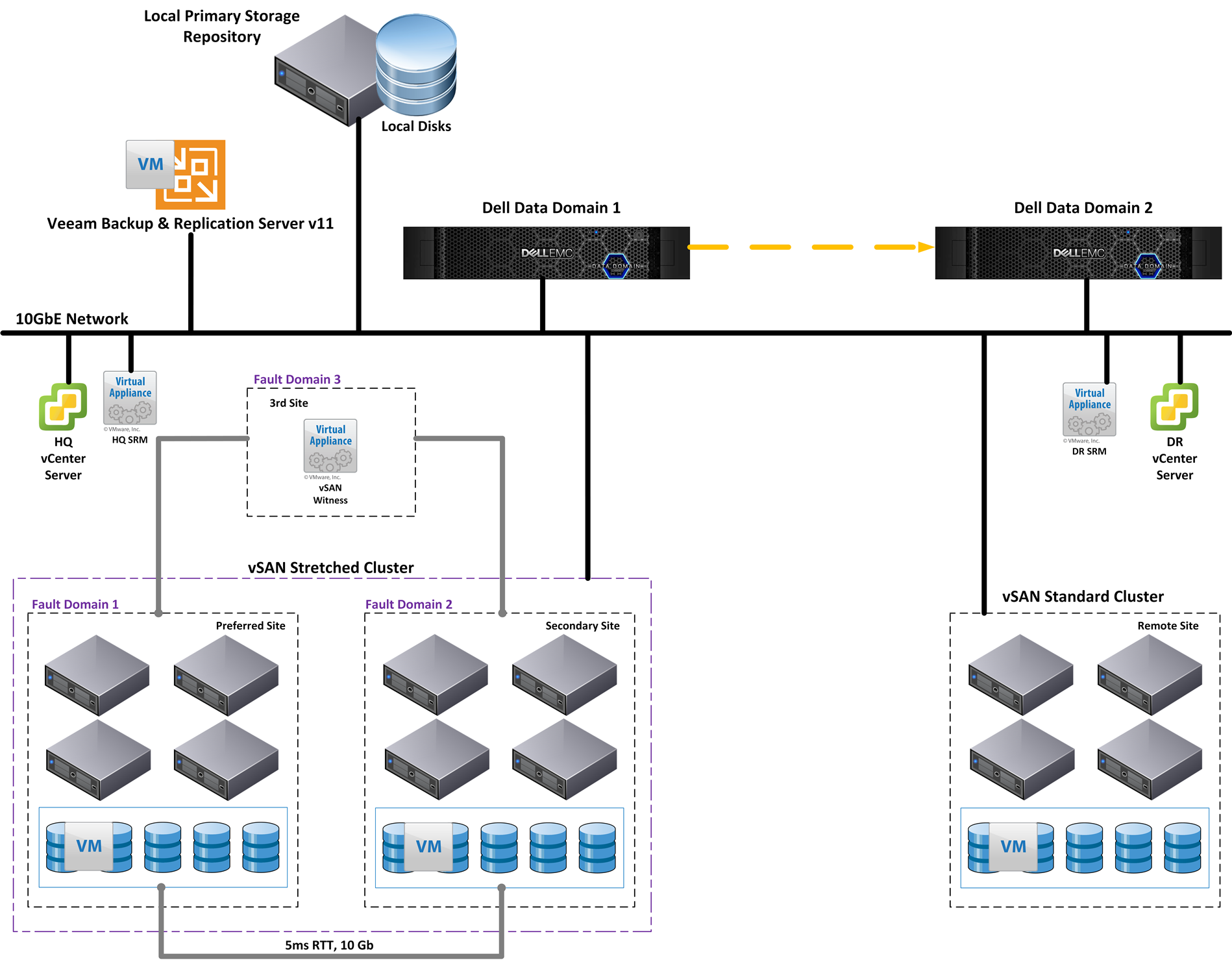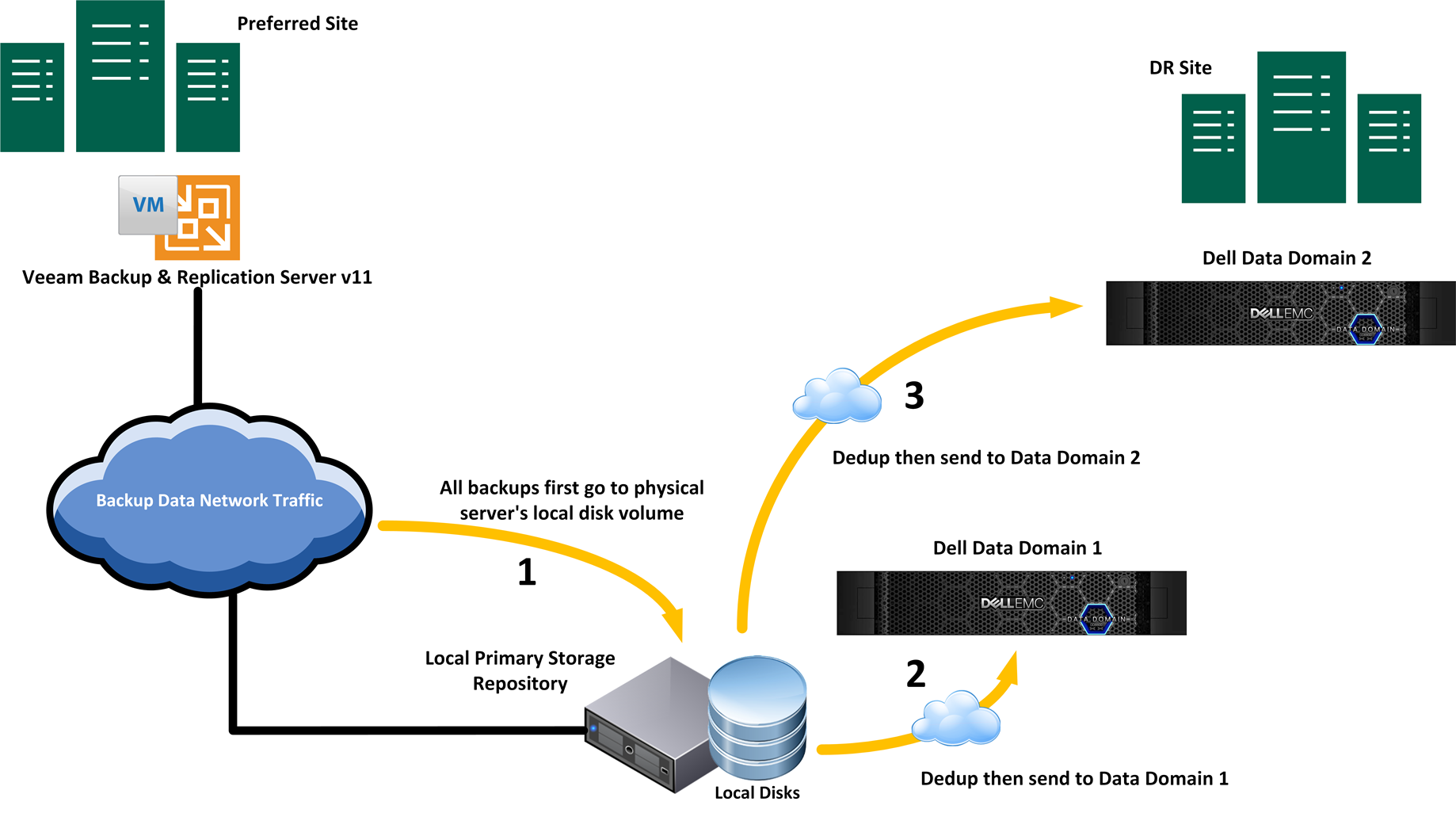Today I will share a successful case of using Veeam Backup & Replication Server and Dell Data Domain Appliance. I just upgraded Veeam Backup & Replication Server to v11. The Figure 1 is the high level of physical diagram. This is a great Veeam scenario for reference.
Physical Diagram

Environment
Preferred Site:
vSAN Stretched Cluster (preferred vSAN nodes)
Veeam Backup & Replication Server v11 (VM)
Veeam Primary Storage Repository
vCenter Server 7.0 Update 3 and vSphere 7.0 Update 3
VMware Site Recovery Manager 8.5 and vSphere Replication 8.5
Dell Data Domain Appliance (Primary)
Secondary Site:
vSAN Stretched Cluster (non-preferred vSAN nodes)
VMware vSphere 7.0 Update 3
Remote Site:
vSAN Standard Cluster
vCenter Server 7.0 Update 3 and vSphere 7.0 Update 3
VMware Site Recovery Manager 8.5 and vSphere Replication 8.5
Dell Data Domain Appliance (Secondary)
Logical Diagram
Figure 2 is the logical diagram of this solution.

The Purpose of the Physical Veeam Server as a Primary Storage
-
Veeam recommends 3rd party Deduplication Appliances (e.g. Dell Data Domain) to be used as Secondary Storage due to rehydration performance.
-
Rehydration for restore will be faster when restoring from a Veeam Server’s local Primary Storage Repository.
-
Avoid rehydration process that happens during DD-to-DD replication.
-
Future option to Tape-Out from physical Veeam server. VM based Veeam server does not support Tape-Out.
-
Lower VM processing resource requirement for the VM Veeam Server.
-
Lower VM storage resource requirement for the VM Veeam Server.
-
VMware SRM can be utilized for Veeam’s own disaster recovery due to the VM Veeam Server not being used as a Primary Storage Repository.




